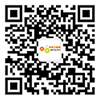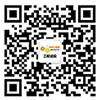你的OT数据是否会在IT海洋中沉浮?
http://www.gkong.com 2022-12-27 17:26 《中华工控网》翻译
Will Your OT Data Sink or Swim in the IT Ocean?
你的OT数据是否会在IT海洋中沉浮?
Why is Operational Technology data (OT data) continuing to make major inroads into the Informational Technology (IT) world? What factors are causing OT data to leave its comfort zone and stepping into a new frontier? And why is this step imperative for the next generation of industrial automation?
为什么运营数据(OT数据)会进入IT世界?是什么让OT数据离开舒适区、进入新领域?为什么这一步对于下一代工业自动化至关重要?
According to Moxa, the reasons OT data is leaving its safe nest are closely tied to today's operational needs. It has to do with how we’re using OT data. To better understand, let’s consider the evolution of OT data, starting with Industry 2.0. This era saw the introduction of electricity and assembly-line production, which prompted the invention of controllers to better manage devices on the factory floor as mass production gained traction. By using a simple on-and-off switch, these controllers helped complete simple routine tasks. Back then, data was few in quantity and stayed within the confines of the devices that generated them. In its infancy, OT data of the Industry 2.0 era was limited to activities within its own devices.
在Moxa看来,之所以要OT数据离开舒适区,与今天的运营需求密切相关,也与我们如何使用OT数据有关。让我们从工业2.0时代开始,看一看OT数据的演变。工业2.0时代,人们引入了电力和流水线生产,推动了控制器的发明,可以更好地控制工厂车间的设备,大规模生产也随之发展起来。控制器通过简单的开关操作,帮助人们完成简单的常规任务。那时,数据量很小,并停留在产生数据的设备范围内。在其初期,工业2.0时代的OT数据的活动范围也仅限于其自身设备之内。
The third Industrial Revolution introduced system automation as the new standard. Advancements in computing and communication technologies enabled automated processes to connect and "talk to each other." This was achieved by adding sensors to the original controllers, a step that created a closed loop involving sensors gathering data and sending it back to the controller for some preliminary calculations. Based on these calculations, feedbacks helped complete the command. This signified the first step taken by OT data from existing solely within devices to it circulating between a few devices in a closed loop.
第三次工业革命引入了系统自动化的新标准。计算和通信技术的进步促使自动化生产过程具备了联通能力。人们通过为原始控制器增加传感器、创建闭环来实现这种连接和通信。该闭环包含传感器收集数据,再将数据发送回控制器,以进行初步计算。基于这些计算,控制器会生成相应反馈,帮助完成命令。这标志着OT数据从仅存在于设备内部到在几个设备之间闭环循环所迈出的第一步。
Along with further technological advancements, the evolution of OT data was inevitable. With the advent of Industry 4.0, or Industrial Digital Transformation, managers are no longer satisfied with only preprogrammed automation. They now demand a smart, self-thinking system, pushing mandates for OT data to the next level. So, the big question now is how to maximize OT data’s true value.
随着技术的进步,OT数据的演变也随之而来。进入工业4.0(工业数位转型)时代,人们不再仅仅满足于预编程的自动化,而需要一种能够自我思考的智能系统。这使对OT数据的要求提升到了全新水平。现在最大的问题是如何最大化 OT 数据的真正价值。
To achieve this feat, OT data has had to extend beyond its original dwellings and step into data centers or the cloud for further analysis, a move that can improve production efficiency, enhance quality, reduce costs, and even provide new business services. This kick-started a phenomenon that turned protected and localized OT data into usable data when transmitting it to remote IT systems and feeding it back to the OT side for real-time optimization. This phenomenon is what Moxa refers to as the Everlasting Data Stream, in which data continuously circulates between OT and IT, forming a lasting loop.
为了实现这个壮举,需要让OT数据走出原有活动范围,进入数据中心或云端完成进一步分析,以尽可能提高生产效率、提升生产质量、降低成本,甚至提供新的商业服务。这赋予OT数据新的价值:受保护的本地OT数据传输到远程IT系统,再反馈给OT端,实时优化生产过程,这些数据因此成为可以指导生产的有用数据。这种现象就是Moxa所说的永恒数据流:数据在OT和IT之间不断循环,形成持续的闭环。
As an example, let's look at an auto parts manufacturer Moxa has worked with. This factory had “bottleneck equipment,” which meant all items had to go through that specific equipment during the manufacturing process. Therefore, if the equipment stopped, so did the entire production line, making maintenance of this equipment imperative. Considering the high stakes, the manufacturer wanted to perform predictive maintenance on it to anticipate the parts that might wear out and stock up in advance to avoid stalling the production because of shortages. In the end, the manufacturer installed additional sensors to the bottleneck equipment. The necessary OT data could then be gathered in real-time and sent to cloud computing for analysis. This Industry 4.0 solution gave management insights into the status of every part, complete with the in-depth prediction analysis needed to take further actions.
以Moxa合作的一家汽车零部件制造商为例进行说明。这家工厂中存在“瓶颈设备”,这意味着所有物品在制造过程中都必须通过某一特定设备。因此,如果该设备停止工作,整个生产线也会停止,对这一特定设备的维护便显得极为重要。考虑到这种高风险,制造商希望对该设备进行预测性维护,预测哪些部件可能会磨损,并提前补充库存,避免因部件短缺而导致生产停滞。他们还为该瓶颈设备安装了额外的传感器。传感器收集必要的OT数据,并将其发送到云计算平台进行分析。最后,云平台计算零件的状态并将预测反馈给管理人员,以采取进一步的行动。
Is OT data ready to swim in the IT ocean?
OT数据准备好在IT领域畅游了吗?
While moving data from an OT domain to an IT domain seems to paint a rose-colored world, a few considerations are required before diving headfirst into the deep end. Moxa proposes these three things to consider before taking this leap:
虽然将数据从OT领域移动到IT领域的设想很美妙,但需三思而后行。Moxa提出,在迈出这一飞跃性的一步前,有三个需要考虑的要素:
Data Interoperability: The first and most common challenge encountered when OT data is moving beyond its original confines is the interoperability of OT/IT data. Since the communication protocols used in the OT field are often vastly different from the ones IT use, systems often run into communication errors. For example, when the OT data output shows a single “5" with no context, IT will never know that the number 5 represents "machine speed" thus stalling the lines of communication. For the OT/IT data cycle to materialize, and for the data to move among the two domains freely, preprocessing OT data is required.
数据互操作性: 当OT数据越过其原始范围时,遇到的第一个也是最常见的挑战是OT/IT数据的互操作性。由于OT领域使用的通信协议通常与 IT 领域大不相同,系统在两者之间尝试发送数据时经常会出现通信错误。例如,当 OT 数据输出显示一个没有上下文的“5”时,IT无法得知数字5代表“机器速度”,通信线路也会因此阻塞。为了实现OT/IT数据循环和两域间数据的顺畅移动,需要对OT数据进行预处理。
Data Integrity: The second challenge is whether OT data can be transmitted in its entirety via connectivity technologies. This is especially challenging because of many disturbances found in OT environments, such as electromagnetic waves generated when devices start, extreme temperatures, harsh environments, and even the mutual interference between the control network and the OT data network, all of which may cause communication disconnection or instability. Disconnection may cause incomplete or dropped transmissions, resulting in erroneous analysis and, by extension, erroneous decision-making. In cases like this, it is important to strengthen the "resilience of data transmission” to ensure that data is promptly transmitted in its entirety.
数据完整性: 第二个挑战是互联技术能否保障OT数据的完整传输。这尤其具有挑战性,因为在OT环境中存在许多干扰,例如设备启动时产生的电磁波、极端温度、恶劣环境,甚至控制网络和OT数据网络之间会相互干扰。这些干扰可能导致通信中断或通信不稳定。通信中断会导致传输不完整或丢包,导致分析出错,进而产生错误决策。在这种情况下,必须加强“数据传输的恢复力”,以确保及时完整地传输数据。
Data Security: Finally, the more valuable OT data becomes, the more important it is to secure its transmission. Cybersecurity was not much of an issue in the past since the physical barriers of a factory were most likely enough to protect the data that was contained within its walls. However, now that we connect OT data to IT systems or to the cloud, its old protective shells no longer work. Therefore, how to strengthen "OT network’s security" will become a required focal point for enterprises.
数据安全: 最后,OT数据越有价值,传输的安全性就越重要。网络安全问题在过去并不严重,因为工厂的物理屏障几乎足以保护内部数据。但是,现在我们将OT数据连接到IT系统或云平台,原来的保护措施便不再起作用。因此,如何加强“OT网络的安全”将成为企业需要关注的重点。
相关新闻
- ▪ Aerotech 发布Automation1 2.7 激光振镜和更多用户功能升级
- ▪ 魏德米勒以创新和开放理念,引领IT与OT融合趋势
- ▪ IOTE 2024 第二十一届国际物联网展顺利闭幕,一座城市与一场展会的双向加速
- ▪ AI驱动产业升级 | IOTE 2024中国智联网生态大会暨“2023物联之星”年度榜单颁奖典礼在沪召开!
- ▪ iSGR 灵耀数智AI驱动IoT方案自动生成平台将在上海重磅发布!
- ▪ 「特斯联」完成20亿元D轮融资,加速模型+系统在AIoT领域落地|
- ▪ IOTE上海物联网展将4月举办,汇聚全球领先技术,共绘未来智慧蓝图!
- ▪ 研华发布新一轮企业战略框架 迎向AIoT + Edge Computing新机遇
- ▪ 贸泽开售Laird Connectivity Sera NX040 UWB+BLE模块 可用于IoT和工业应用
- ▪ 法国仓储机器人公司Exotec销售额突破10亿美元





